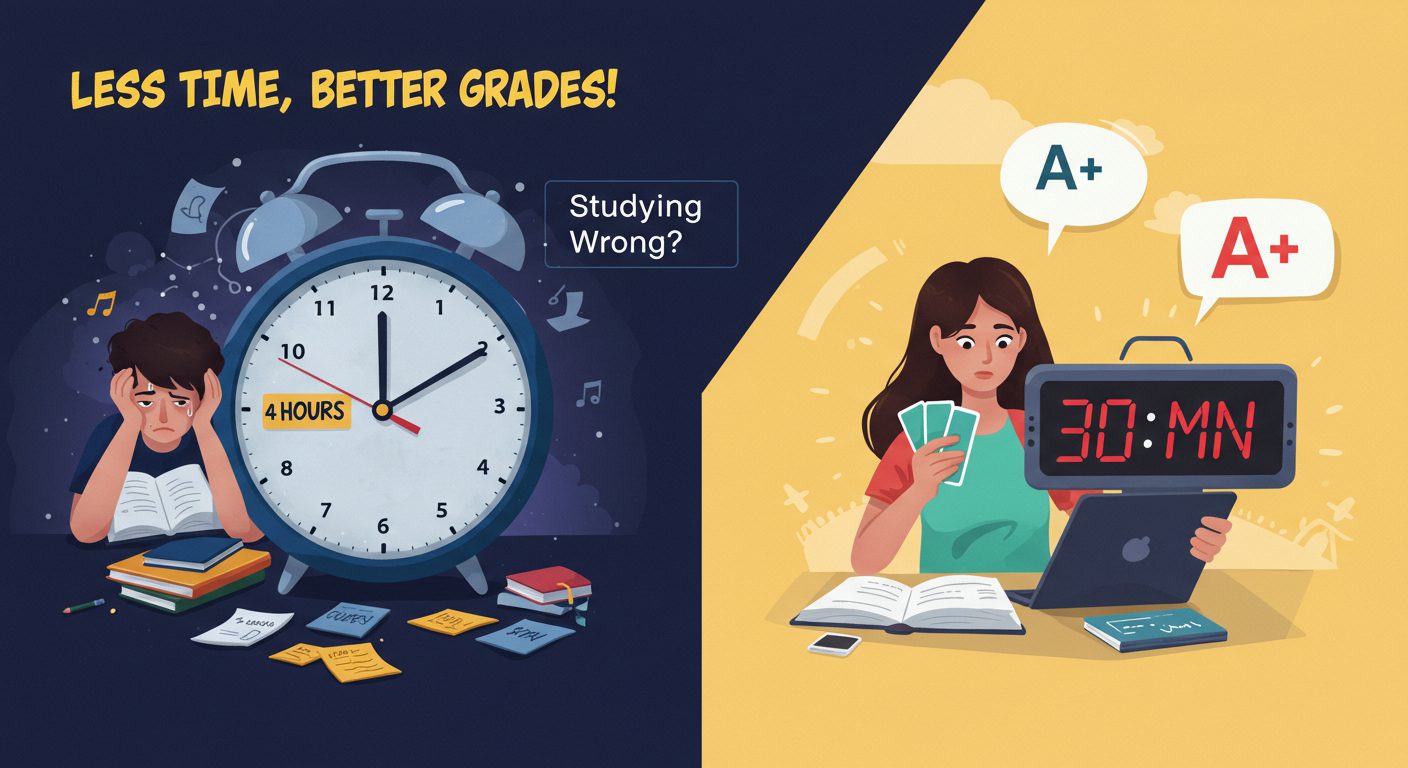You have likely experienced getting lost in continuous studying that seems productive but leaves you drained. The reality is that studying is not about how colorful your notes are or the hours you put into it, but rather the approach taken. This article aims to help you reclaim your time and still have a life all while acing your deadlines by taking a strategic approach to studying. Prepared to unleash a transformative approach to studying? Let us take an in-depth look at optimizing your time to outperform expectations.
Diving into consumption might pose a problem for many students.
Take a moment to think about the last time you meticulously went through your textbook highlighting every single word. For some it may feel extremely tedious and somewhat pointless. Some might even prefer watching summary videos over reading, however, the frustration of not remembering anything can be overwhelming.
This phenomenon is known as the consumption trap. Your brain cannot function as a sponge; rather, like a muscle, it needs the right kind of stimulation. Instead of overwhelming yourself with copious amounts of pages, you should narrow your focus on what actually matters. Start with one or two videos on the topic you are studying. Easy right? If you have read the textbook or have gotten your hands on one that specifically covers the topic in a series, then you should utilize chunks as learning tools. Segmentation is another incredibly idolized method in learning which uses short lessons.
Employ Active Learning.
Rereading and copying notes are examples of passive studying. It won’t work, like attempting to fill a leaky bucket. In active learning, you patch those holes. You can teach concepts to your pets or friends, and even use flashcards and practice questions. All these techniques make you retrieve aspects rather than pouring water into your bucket, greatly improving retention. For example, after reading about photosynthesis, ask someone if they know about it, and you will a lot of gaps that need filling. This way studying becomes much more engaging.
Take Breaks in Between Study Sessions.
The heroics of marathon study sessions are appealing, but they can lead to serious burnout. Breaking your studying into sprints will do wonders with focus and rest. Try aiming to focus for 30-to-60-minute periods. It is best if you set a timer and plan short breaks in between. Often, mid-session breaks are overlooked. Stretch or get a quick snack during them. This refreshing boost helps to keep your mind active and reduce the mental fog and overwhelm. This helps with sharp focus. Change subjects every session for even better results. Give yourself the space to breathe and you will receive so much retention.
Test Yourself First
What is the first thing you do before completing any task? For an ideal self-assessment, recall as much as you can and see how much information you can retrieve upon recall. Grab a blank sheet of paper and write everything you know about, say, the French Revolution.
Identify any missing elements and try figuring out the key figures and dates. Remember, early testing creates a focused revising guide and provides you with a defense-like structure to help save time. The process of that alone helps commit information to memory and allows one to learn long before the preparation begins.
Connect the Dots
Links create patterns, and patterns help build structure.
Integrating concepts into a bigger framework makes understanding easier than memorizing facts individually.
Studying economics? Relate supply and demand with your favorite coffee shop.
These hooks allow students retrieval during exams quickly. Visual aids like the mind map or a simple sentence creating can be useful forming connections. Facilitating these various habits enables transforming scattered individual, meaning less facts, into a beautiful cohesive story.
Review Before Bed
Sleeping is perhaps one of the most underutilized tools when it comes to recalling and consolidating information learned. It is always best to start preparing information that need to be completed through a light routine, and a 10 minute review before bed is the perfect way to skim through material you have not completed. Recite your flashcards, key terms that you’ve learned, or even explain concepts to yourself. Avoid cramming, keep it light. This technique stores the information primed for your brain to process overnight, thus making it easier for you to recall the material in the morning. Along with at least eight hours of sleep, you’re ensuring smooth unassorted effortless focus the next day.
Key Takeaways
- Escape the consumption trap: Prioritize quality over quantity to study efficiently.
- Use active learning: Practice questions and teaching others boost retention.
- Keep sessions short: Study in 30- to 60-minute bursts to stay focused and avoid burnout.
- Test early: Recall what you know first to pinpoint gaps and save time.
- Make connections: Link new ideas to familiar concepts for better memory.
- Review at night: A quick pre-sleep review leverages your brain’s consolidation power.
Start Small, Dream Big
Studying smarter doesn’t mean overhauling your life overnight. Everyone’s journey is different—some of you might love flashcards, while others vibe with teaching or mind maps. The beauty of these strategies is their flexibility; you can mix and match to fit your style. By focusing on retention over time spent, you’re not just prepping for exams—you’re building skills that make learning easier and life more balanced. So, grab one idea from this article and try it today. Maybe it’s a 30-minute study sprint or a quick bedtime review. Whatever you choose, you’re taking the first step toward studying smarter and unlocking your potential. You’ve got this—now go make it happen!
